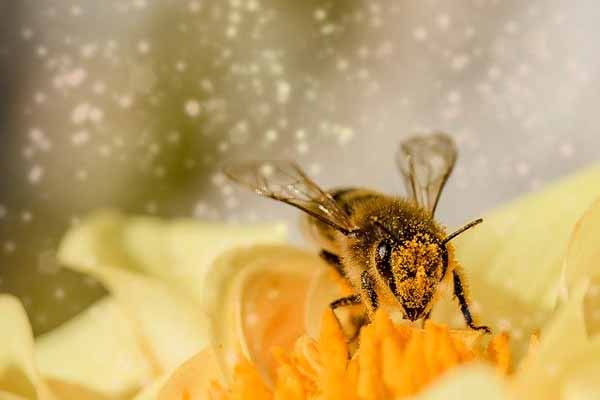The lyrebird got its name due to its unusual and beautiful tail.
The structure and structure of feathers on its tail forms a lyre. The two outermost striped quills bend outward, and the other quills between them are covered with rare feathers and look like strings or a cobweb. But only males can boast such a tail, and then older than seven years. Their body color is dark gray, and their wings are brown. The females are modest and do not have such a magnificent tail, and their body color is gray-brown, which helps camouflage in the woods. But this is not the only feature of the bird. There are other interesting facts about lyrebird’s tails.
Nature has endowed it not only with a unique hearing but also with a sophisticated voice system, which allows the lyrebird to imitate sounds exactly as they hear them. A native Australian lyrebird, however, as well as the strangest things. But even there, his habitat is limited to a small area from the south of Victoria, to the south-eastern part of the state of Queensland. And also lyrebirds were brought to the island of Tasmania and bred there. These wonderful birds belong to the squad of sparrows and prefer the daytime lifestyle, climbing trees at night. They are similar to chickens in size. A male with a tail 80-100 cm, a female 74-86 cm. Weight may not exceed 1.2 kg. We have collected for you the most interesting facts about lyrebird.
7 facts about the lyrebird
- One of the museums in Australia has the remains of a lyrebird’s tail, dating back about 15-17 million years! This is one of the oldest modern animals in Australia.
- Lyrebirds lead a secretive lifestyle on earth among trees and bushes. Rarely come across the eyes of man. They do not fly too well but run very fast. So it is a great pleasure to see a lyrebird!
- But, despite their secrecy, they love to be photographed. That’s why almost all the photos are very successful. It’s just a singer and a model in the same carcass and in general a star!
- Possessing powerful legs and sharp claws, lyrebirds skillfully loosen the soil. From there they get their favorite delicacies: insects and larvae. Favorite dishes are also juicy snails and ground crustaceans.
- Lyrebirds build large and not very neat nests. But with a roof! They cover the bottom with soft moss, feathers, and spines. Females are the only ones who nest. As they say, the horse will stop for a race and enter the burning hut, and the nest will build and lyrebird will grow.
- All the labor of nesting for one egg. The fledgling develops for a long time; after the birth, it learns all the subtleties of the science of lyrebird for another six months, learning from adult lyric scientists.
- The life expectancy of a lyrebird is about fifteen years. It is filled with all the charms of the music business: crowds of fans, tours, and music, music…
Top 3 most interesting facts about the lyrebird
- Australians are very fond of their lyrebirds and often use their image for coats of arms or emblems. But the true declaration of love is the honorary image of a lyrebird on a dime Australian coin and a hundred-dollar bill.
- By the way, speaking of love confessions. The mating dances of males are an incredible spectacle. During the dance, a male rakes up a slide of 15 centimeters and climbs on it. Then he throws his tail open over his head, boasting of his dignity. But one outfit will not conquer a female, so he begins to shout songs very loudly.
- The lyrics repeat the voices of other birds with incredible accuracy, which undoubtedly drives the whole district crazy. But that’s not all! Surprisingly, they easily mimic household sounds like a chainsaw, mobile ringtones, musical instruments, and even a human voice like a voice recorder … creepy beats.
The lyrebird: natural enemies, the population
In general, these birds are very cautious creatures by nature. This feature makes it difficult to study them in natural conditions. At the slightest threat, birds warn their congeners by screaming, and they have time to hide. By the way, representatives of this species move almost silently. Despite this, the bird for many is a tidbit prey. Natural enemies of lyrebirds are families of cats, wolves, and foxes. Enemies are not few, and they often attack to enjoy these attractive birds.
At the moment, the lyrebird is under strict protection. The greatest danger for them is the destruction of their usual habitat – wet tropical and eucalyptus forests. And just recently, about fifty years ago, the bird was under threat of extinction, but the government has solved this problem and taken all measures to preserve this magnificent species, which helped to significantly increase the population.
Facts About Lyrebirds
Lyrebirds are ground-dwelling birds of the Australian continent. They are members of the Menura genus in the family Menuridae. The genus name comes from its syllable, which means “a note sounded by a bird.” Despite their small size, these birds are extremely loud and distinctive. Here are some interesting facts about symphony-playing lyrebirds.
Although lyrebirds do not reproduce well in captivity, they do have very distinct vocal sounds. Their tail is shaped like a symphony and is adorned with a distinctive lyre-like structure. This unique and elaborate tail is covered in rare feathers that look like strings or cobwebs. Interestingly, this distinctive feature is only found in male Lyrebirds. Female Lyrebirds have a gray-brown body color, which is helpful for camouflage.
Female lyrebirds lay one egg and incubate it for 50 days. A solitary male lyrebird will raise and care for the lyrebird chick until it reaches adulthood. This species will also be a good watchdog for young lyrebirds, as it is very protective of its young. Unlike most passerine birds, lyrebirds have very short lifespans.
The lyrebird’s song is made from an echo. This echoes the sounds of other creatures, which is what makes it such an excellent mimic. Experts believe they learned this skill from other birds, and they now have a way to imitate dozens of different sounds. It can even imitate sounds from its environment. Besides being a wonderful songbird, the lyrebird has two types.
The lyrebird has a short lifespan. They are small and have a tail that is about half a centimeter long. The lyrebird is not a very social bird, so it is not possible to leave it with your grandparents. They are not good at mimicking the sounds of dogs and other birds. A lyrebird’s voice is also not the same as a human’s.
A lyrebird’s tail is unusually-shaped. The tail has a structure similar to a symphony. The striped quills in its tail form a ring. The lyrebird’s tail is covered with rare feathers that look like strings or a cobweb. Only male yippies can boast of a symphony-like lyrebird tail.
The lyrebird is an impressively-shaped bird. Its tail is composed of a series of feathers that form the symphony of the lyrebird’s wing. In fact, a yip-yip in a lyrebird’s tail can sound like a chainsaw. If the female yip-yip-bird has a lyrebird’s wing, it will be capable of mimicking other birds and even foresters.
Lyrebirds can be found throughout the world. They are the largest songbirds in the world and are among the largest birds in the world. Their long, untidy tails resemble an ancient musical stringed instrument. The female yip-yip is the most vocal among all birds. During the mating season, the lyrebird lays one egg and incubates it for 50 days.
The lyrebird is a curious bird. Its long, wedge-shaped tail looks similar to the lyre of Apollo. It is also very long, with a female’s tail being 74 cm longer than the male. Its male and female tails measure about 80 to 100 cm and 84 cm. The yip-yip is a symbol of Australia.
A lyrebird’s long, curved tail is the bird’s most important feature. Its spectacular tail is what attracts males and females to mates, and it is often mistakenly thought that the male is more attractive than the female. Moreover, the lyrebird’s long, slender tail is a good way to communicate with others. These birds live in the bush of South America, and it is not uncommon to see them in the rainforest.
Lyrebirds are not dangerous to humans. They are not aggressive, but their short, pointed bills are a great way to catch prey. In the wild, lyrebirds often prey on smaller animals, including squirrels. While the species is not considered to be a threat to humans, they are still endangered. Luckily, they aren’t a threat to the environment, and you can learn a lot about them by researching their life history.








